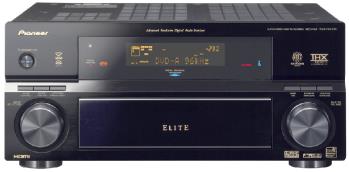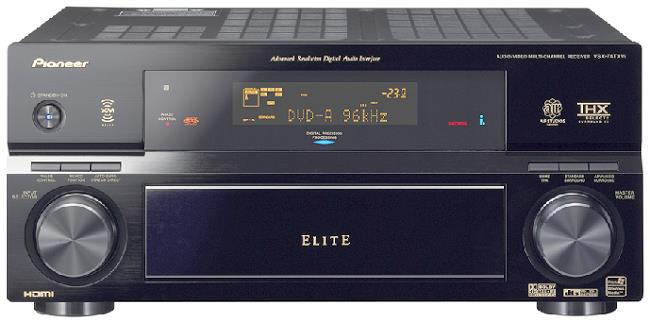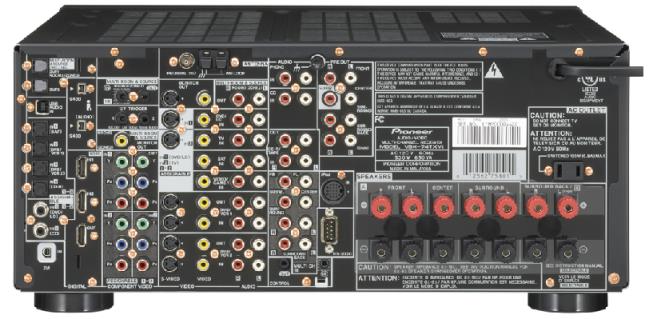|
|||||||||
Introduction I have been in the
market to replace my Pioneer Elite VSX-53TX receiver for awhile now. I
wanted to move up to digital transmission of high resolution multi-channel
audio, and as time progressed, HDMI switching. After a positive experience
with my 53TX and an absolute love of the 59TXi, I requested a 74TXVi for
review. The 74 is Pioneer's upper mid-range entry. It's lighter than I expected. In fact at 35 pounds, it is 3 pounds lighter than the 53TX. While the rated power consumption has dropped from 600W for the 53TXi to 530W for the 74TXVi, the rated watts per channel has been increased. When connecting
my various components to the input jacks, I noticed a fair amount of give on
the jacks themselves, and the pressure on one jack would visibly move the
others. While back there, I immediately noticed that HDMI switching is now
included and the number of component and digital audio inputs has increased.
Also, a special adapter cable is included to allow direct receiver control
and interface with 3G and newer iPods. This could be a huge added bonus as
these type of connections are typically a fairly expensive option. While a definite improvement over both the 53TX and 59TXi remotes,
the remote The remote's Achilles' heel is the same one that plagues many others, namely that there are far too many buttons of the same size to use by feel, and a lack of backlighting means it is nearly useless in low light. Those of us with projectors will find little use for this remote other than to program another remotes, with the exception of possibly volume control. There is an LCD to let you know what mode/device the control is on. This is definitely needed due to the large number of input types. Even the eight direct access buttons aren't enough, and a "shift" type method is applied to add seven more! A nice feature is color coding next to the buttons to let the user know which buttons will have functions for such devices as the iPod (yellow) receiver (green), tuner (blue), and DVD (red). With the nearly obscene number of functions and options on modern receivers, there is a definite challenge to try and make a user friendly interface to access all controls. In all honesty, devices such as the Universal Remote Control (HomeTheaterMaster) and Logitech Harmony remotes are about the only solution. Perhaps a nice gesture would be for receiver manufactures to include a disk with profiles to load onto some of the more popular universal remotes out there. Overall the remote was functional in a room with moderate light, the commands were responsive, and the range was acceptable. Set-up/Features Wow, if there is one area
the 74TXVi shines in particular it is this one! Notice this is just transcoding, so the S-Video and composite inputs will remain interlaced and at 480i (i.e., no de-interlacing or scaling is performed). The component video format will also be retained, so 720p component stays at 720p, and 1080i stays as 1080i when output through HDMI. There are two HDMI inputs with HDCP (version 1.1) and one HDMI output. In addition, there are three assignable component video inputs and one output. Component frequency response runs out to 100 MHz, easily allowing for HD switching without degradation. There are also four S-Video (one assignable) and composite inputs and three outputs (finally a reasonable number!) with one additional set on the front panel. Lastly, there is a group video frame delay adjustment from 0 to 6 frames in 0.1 frame increments. This is different from audio group delay.
Click on the photo above to see a larger version.
|
|||||||||


 included with the 74TXVi still falls far short of ideal. As it
seems no supplied remote does what I wish, it almost feels futile to point
out the problems.
included with the 74TXVi still falls far short of ideal. As it
seems no supplied remote does what I wish, it almost feels futile to point
out the problems.



